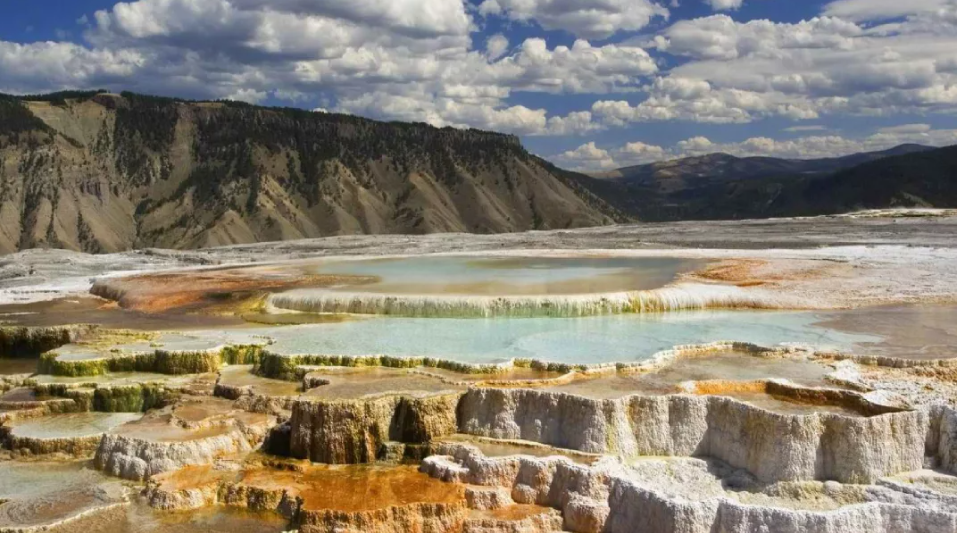Nestled within the stunning landscapes of Yellowstone National Park lies a geological wonder that captivates visitors from around the globe: Mammoth Hot Springs. This unique hydrothermal feature showcases nature’s artistic prowess through its intricate terraces, colorful pools, and steaming thermal waters.
Mammoth Hot Springs is located in the northern part of Yellowstone, near the park’s North Entrance. Its formation is attributed to the park’s underlying volcanic activity, which heats groundwater and causes it to rise to the surface, carrying dissolved minerals along the way. As the hot water flows over the landscape, it deposits these minerals, primarily calcium carbonate, creating the distinctive terraces that define Mammoth Hot Springs.
One of the most striking features of Mammoth Hot Springs is its terraces, which resemble cascading limestone steps. These terraces are constantly evolving, as the mineral-rich water flows over them, leaving behind new deposits and sculpting intricate patterns. Over time, some terraces may dry out and become inactive, while others continue to grow and change, offering visitors a dynamic display of nature’s creativity.
The vibrant colors of Mammoth Hot Springs are another captivating aspect of this geological marvel. The presence of thermophiles, heat-loving microorganisms, in the thermal waters gives rise to an array of hues, ranging from brilliant oranges and yellows to deep blues and greens. These microbial mats thrive in the extreme conditions created by the hot springs, adding to the visual splendor of the area.
Visitors to Mammoth Hot Springs can explore its wonders via a network of boardwalks and trails that wind through the terraces and surrounding areas. Along the way, interpretive signs provide insights into the geology, ecology, and history of the area, enhancing the visitor experience. Additionally, ranger-led programs and guided tours offer further opportunities to learn about the unique features of Mammoth Hot Springs and the processes that shape them.
In addition to its natural beauty, Mammoth Hot Springs holds cultural significance as well. The area has been inhabited by Indigenous peoples for thousands of years, who valued its thermal waters for their healing properties. Later, during the establishment of Yellowstone National Park, Mammoth Hot Springs became a hub for tourism, drawing visitors eager to witness its otherworldly landscapes.
Today, Mammoth Hot Springs continues to inspire awe and wonder in all who visit. Whether marveling at the intricate terraces, admiring the vibrant colors, or learning about its geological and cultural significance, a visit to Mammoth Hot Springs is an unforgettable experience that highlights the power and beauty of nature.
